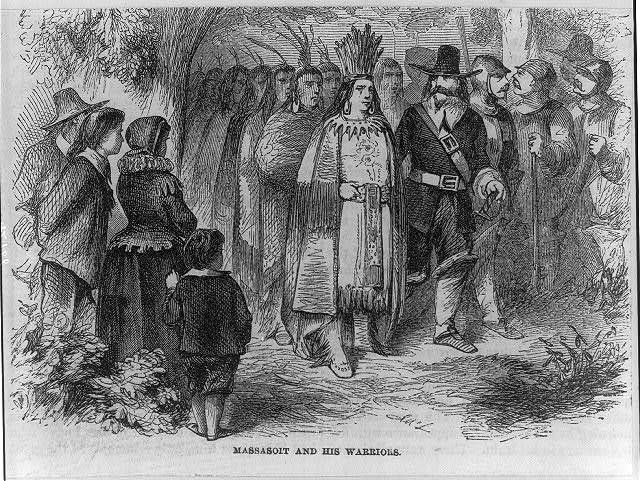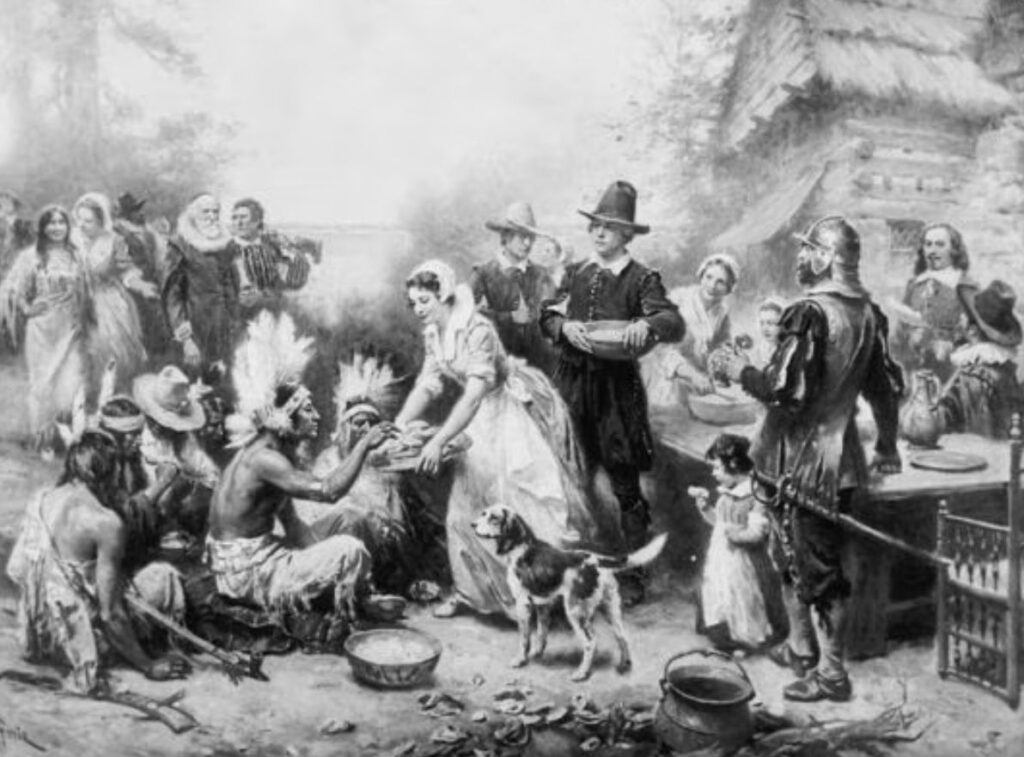Massasoit: Diplomat, Leader, and Protector of Wampanoag Sovereignty

Massasoit, also known as Ousamequin, was a paramount sachem (chief) of the Wampanoag tribe in the 17th century, residing in present-day Massachusetts. His leadership and diplomatic skills played a crucial role in shaping early relations between the Wampanoag and European settlers, particularly the Pilgrims who arrived on the Mayflower in 1620.
Early Life and Rise to Power:
Little is known about Massasoit’s early life, but he likely inherited his position as sachem from his father, following Wampanoag tradition. He emerged as a prominent leader during a period of significant upheaval, with European explorers increasingly encroaching upon Wampanoag territory.
Diplomatic Alliance with the Pilgrims:
In March 1621, Massasoit forged a historic alliance with the Pilgrims at Plymouth Colony, led by Governor John Carver. This alliance, known as the “Treaty of Tawantinsuyu,” or simply the “Treaty of Plymouth,” established a mutual defense pact and facilitated trade between the Wampanoag and the colonists.

The first Thanksgiving, which took place in the fall of 1621, is often associated with Massasoit’s diplomacy and the cooperative relationship between the Wampanoag and the Pilgrims. However, the exact details of the feast and its significance in Wampanoag culture are subject to historical interpretation.
Maintaining Peace and Sovereignty:
Despite initial cooperation, tensions between the Wampanoag and European settlers escalated in the following decades due to land disputes, cultural misunderstandings, and the increasing influx of colonists. Massasoit skillfully navigated these challenges, seeking to preserve Wampanoag sovereignty while avoiding open conflict.
Legacy and Historical Significance:
Massasoit’s legacy as a peacemaker and diplomat endures in both Wampanoag and American history. His alliance with the Pilgrims, although complex and often fraught with tension, temporarily stabilized relations between Indigenous peoples and European settlers in the region.
However, the long-term consequences of European colonization, including disease, warfare, and displacement, would profoundly impact the Wampanoag and other Indigenous nations in New England. Massasoit’s leadership during this pivotal period reflects the resilience and adaptability of Indigenous peoples in the face of adversity.
In conclusion, Massasoit of the Wampanoag was a significant figure in early American history, known for his diplomatic efforts to establish peaceful relations between Indigenous peoples and European settlers. His legacy reminds us of the complexities of colonial encounters and the ongoing struggles for Indigenous sovereignty and justice.





